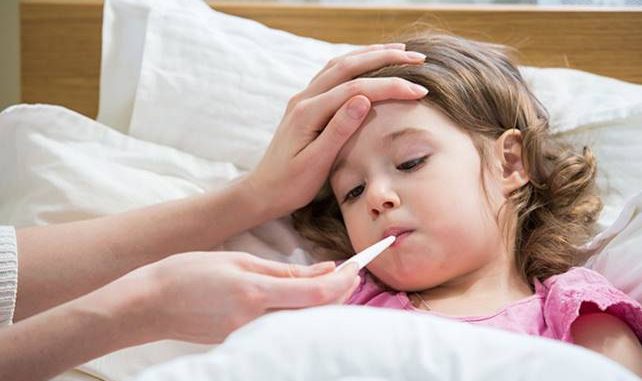
According to the World Health Organization (WHO), pneumonia claims the life of a child every 20 seconds and accounts for 16 percent of all deaths of children under age 5. (1)
While 99 percent of pneumonia-related deaths occur in low- and middle-income countries, it’s still important to recognize how the symptoms show up in children.
Unlike adults, children who have pneumonia may not experience a nagging cough or fever, and may have signs of infection that are much more subtle.
They also are at greater risk of contracting the disease because their immune systems aren’t fully developed.
“While most healthy children can fight the infection with their natural defenses, children whose immune systems are compromised are at higher risk of developing pneumonia,” according to the WHO. “A child’s immune system may be weakened by malnutrition or undernourishment, especially in infants who are not exclusively breast-fed.” (1)
Overall, pneumonia symptoms vary according to age, but there are a number of clues that can help you recognize when your child has more than a bad cold.
“Age makes a big difference, as well as a person’s immune status … and, of course, the symptoms themselves,” which often mimic those of a cold or flu, says Marie Budev, MD, a pulmonologist and the medical director of the lung transplant program at the Cleveland Clinic in Ohio.
Michelle Barron, MD, an associate professor in the division of infectious diseases at University of Colorado in Denver, agrees that being young and in good health doesn’t mean you’re immune to pneumonia — just the opposite, in fact.
“There’s an interesting paradox where if you’re young and healthy, your immune system can go into overload,” says Dr. Barron. “Your immune system is like an elite military constantly guarding you and looking for things. If they recognize invaders, they attack.”
When there’s a “big immune-system response,” chemicals released to fight the infection can cause severe inflammation throughout the body and potential organ damage. “Your body can control the response most of the time,” says Barron. “But, if not, you can end up with collateral damage.”
Mild Pneumonia in Children
Pneumonia that is caused by certain bacteria, including Mycoplasma pneumoniae and Chlamydophila pneumoniae, usually results in milder symptoms, even in children. (2, 3)
This type of pneumonia, known as atypical or walking pneumonia, is prevalent among school-age children.
Children with walking pneumonia may not feel sick enough to stay home, but they could have the following symptoms:
Dry cough
Low-grade fever
Headache
Tiredness
Mycoplasma pneumoniae is responsible for about 2 to 20 percent of all adult cases of pneumonia, but the rate is even higher among school-age children. An estimated 2 million Mycoplasma pneumoniae infections occur each year in the United States, and it’s the most common cause of pneumonia in school-age children. (4)
That’s because the bacteria that can cause walking pneumonia — which most often develops in late summer and fall — spread from person to person. Outbreaks clearly can occur within groups that have close contact, such as schools or camps, and kids who are exposed to these germs while they’re at school often bring the illness home.
Mycoplasma pneumoniae infections can cause a number of symptoms, including fever, fatigue, headache, sore throat, skin rash, cough, and ear infections.
Fortunately, Mycoplasma pneumoniae infections respond well to antibiotic treatment, and they are rarely serious. People who have had the infection develop some level of immunity, but a subsequent infection is possible.
Moderate Pneumonia in Children
Viruses cause most cases of pneumonia in preschool children between ages 4 and 5. (5)
Affected children will usually have symptoms that are also associated with other viruses, such as:
Sore throat
Cough
Low-grade fever
Nasal congestion
Diarrhea
Loss of appetite
Tiredness or lack of energy
Severe Pneumonia in Children
Bacterial pneumonia is more common among school-age children and teens. (6)
These types of pneumonia often develop more abruptly than a cold or virus and result in more dramatic symptoms, such as:
High fever
Sweating or chills
Flushed skin
A bluish tint to the lips or nail beds
Wheezing
Difficulty breathing
Pneumonia in Newborns and Infants
Newborns and infants may not show typical signs of pneumonia infection.
It may also be difficult to determine if toddlers have the illness because they may not be able to communicate how they feel as well as an older child can.
Still, the following symptoms can indicate that a baby or young child may have pneumonia:
Looking pale
Being limp or lethargic
Crying more than usual
Feeding poorly
Being irritable or restless
Vomiting
Medical Attention for Children With Pneumonia
Children who have been recently hospitalized, use antibiotics frequently, have asthma or another chronic illness, or haven’t been fully vaccinated against certain illnesses — rubeola (measles), chickenpox, pertussis (whooping cough), Haemophilus influenzae type B (Hib) infections, or the seasonal flu — are at greater risk for developing pneumonia.
A child who hasn’t been vaccinated with Prevnar 13 (PCV13) is also more likely to get pneumonia. (7)
The only way to know for sure if a child has pneumonia is to see a doctor. A pediatrician or family medicine doctor can check for fluid in your child’s lungs using a stethoscope or X-rays.
By paying attention to early pneumonia symptoms in children, parents may be able to avoid a trip to the emergency room. Still, pneumonia can progress very quickly among children, particularly infants and those with underlying medical conditions.
Two key signs that a child requires immediate medical attention are:
Flaring of the nostrils while breathing
Using the muscles below and between the ribs and above the collarbone to aid in breathing
Young children with pneumonia will breathe fast. Doctors say you can see their belly muscles working hard to help them breathe. If your child is breathing fast, it’s best to take them to the emergency room.
Source :-EverydayHealth

Leave a Reply